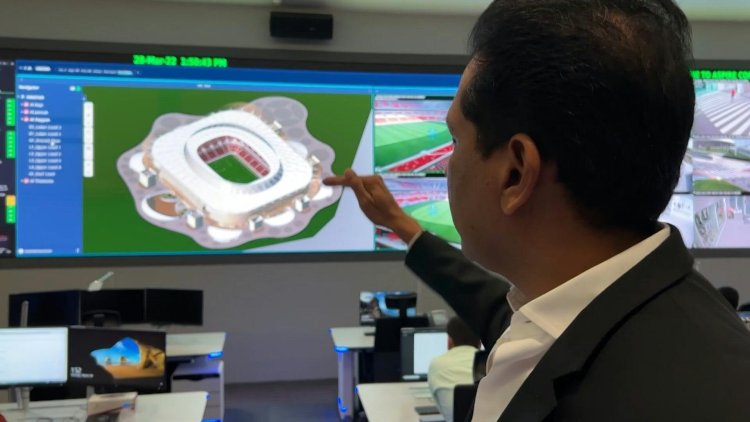World Cup 2022 Command Centre can 'monitor' and 'control' all 8 stadiums simultaneously

A map of the world flashes cyber threat warnings. Into view across the big-screen-covered wall comes live video from World Cup stadiums. Then there’s the incident alarm panels for all eight venues in Qatar.
This command centre for the World Cup is all quiet and calm. By November, however, it will be at the heart of operations for the most high-profile sporting event to be staged in the Middle East.
This is a first look inside one of the key locations overseeing security and logistics.
As a screen with the map of Qatar shows starkly, the World Cup is being staged in the most compact setting ever. All eight stadiums being monitored from this room, which is on the Aspire sports campus on the outskirts of Doha, are within a 30-mile (50-kilometre) radius of the capital of this energy-rich Gulf nation.
Most of the 32 nations will have discovered where they will be playing after the tournament draw takes place in the centre of Doha on Friday — the first major gathering of world football in the city since Qatar so unexpectedly won the FIFA hosting vote in 2010. The decision required a major upgrade of infrastructure and for this tiny nation to prepare for an unprecedented influx of supporters.
“We have the capabilities to remotely monitor every system we can, control every system, and thereby change the behaviour in the stadiums,” Niyas Abdulrahiman, an executive director with the local organisers, said.
Abdulrahiman was speaking while surrounded by staff peering into banks of monitors.
“We can also receive alarms and notifications as part of our proactive monitoring in the command centre. Before something goes wrong.”
Qatar claims it is the most sophisticated system ever seen at a sporting event. In linking the stadiums to one hub, each stadium also has a digital version of itself that allows officials to trace an issue on site.
The deadly crush in January involving fans at the African Cup of Nations in Cameroon could be avoided at the World Cup thanks to the command centre’s ability to offer key decisions about crowd control and whether to open gates.
“One of the most powerful features of this command centre is coordinating the different actions on the ground in the event of any unfortunate incident, such as ... a crowd-based situation,” Abdulrahiman said.
“Here the power of the platform is that you have total control over those systems and, if such an incident happens, there’s a predefined standard operating procedure that ... starts executing one, two, three steps. So one of them would be that, if there is an emergency, open all the gates. So that can happen all at once.”















